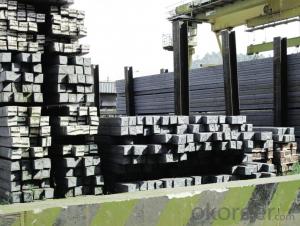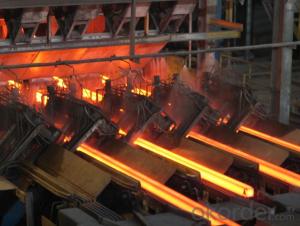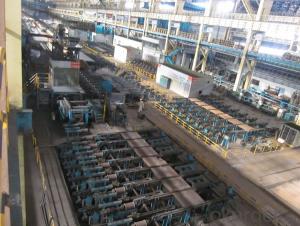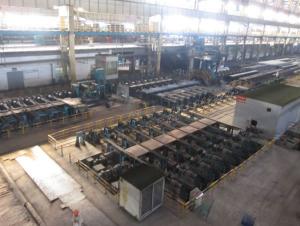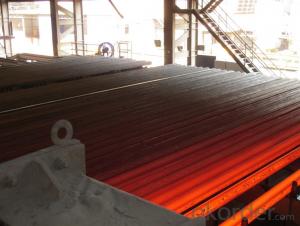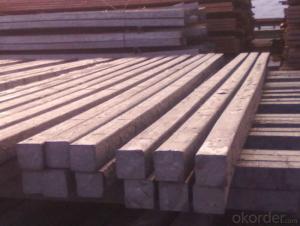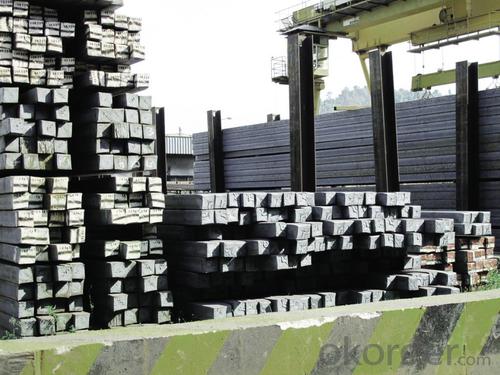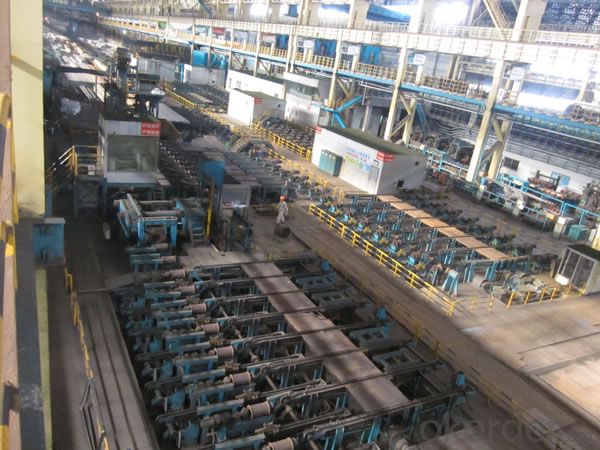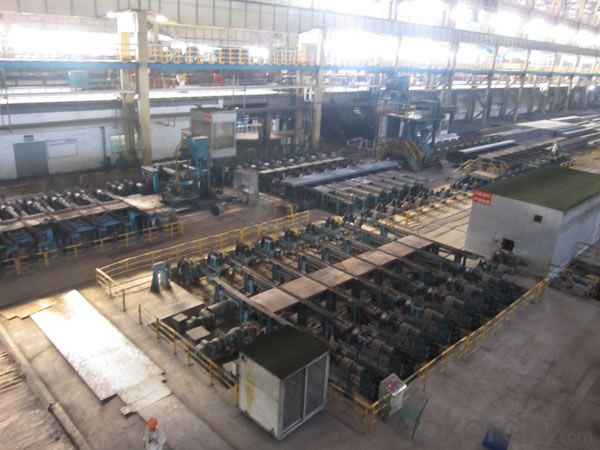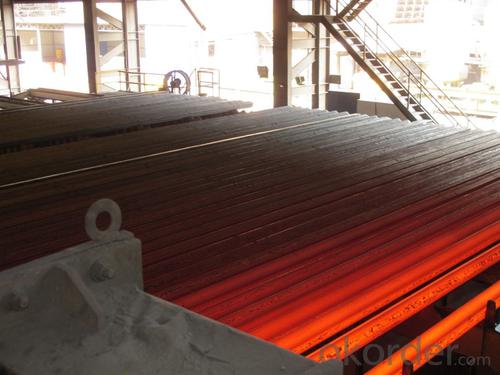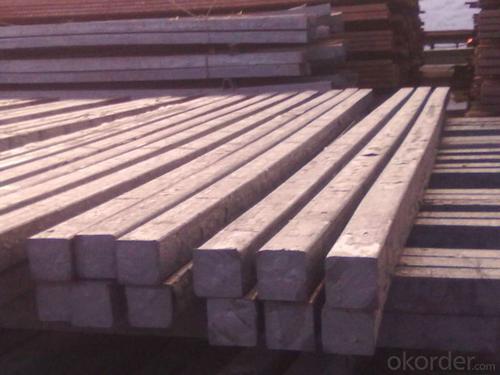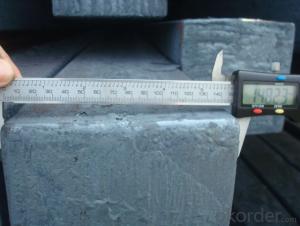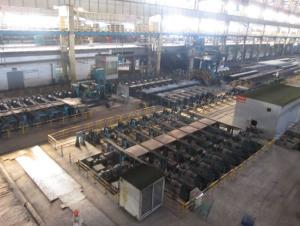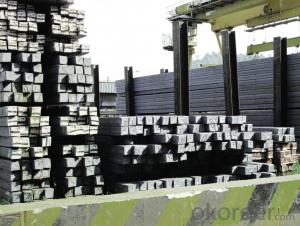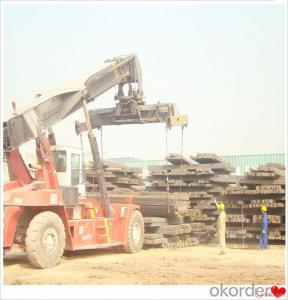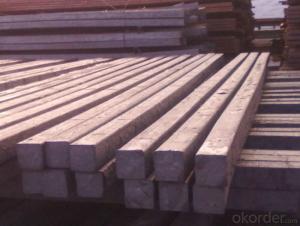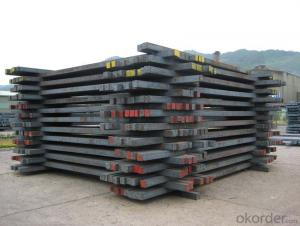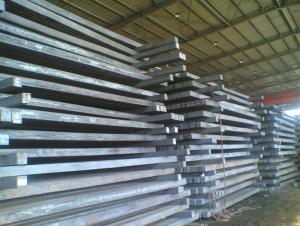Hot Rolled Square Steel Billet 3SP Standard 100mm
- Loading Port:
- Shanghai
- Payment Terms:
- TT OR LC
- Min Order Qty:
- 2000 m.t.
- Supply Capability:
- 10000 m.t./month
OKorder Service Pledge
OKorder Financial Service
You Might Also Like
Structure of Hot Rolled Square Steel Billet 3SP Standard 100mm
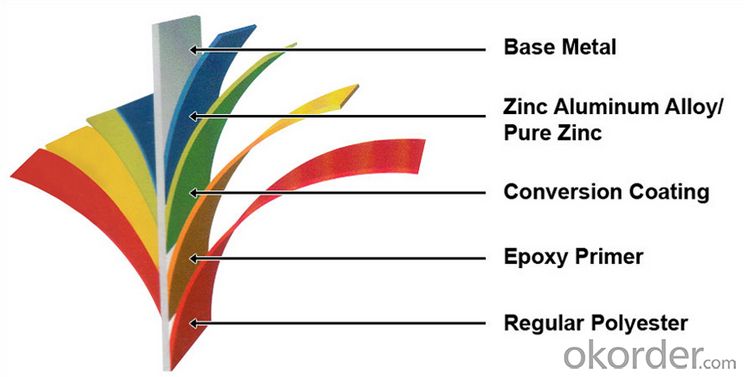
Description of Hot Rolled Square Steel Billet 3SP Standard 100mm
PPGI is made by cold rolled steel sheet and galvanized steel sheets as baseplate, through the surface pretreatment (degreasing, cleaning, chemical conversion processing), coated by the method of continuous coatings (roller coating method),
and after roasting and cooling. Zinc coating: Z60, Z80, Z100, Z120, Z180, Z275, G30, G60, G90
Alu-zinc coating: AZ60, AZ80, AZ100, AZ120, AZ180, G30, G60, G90
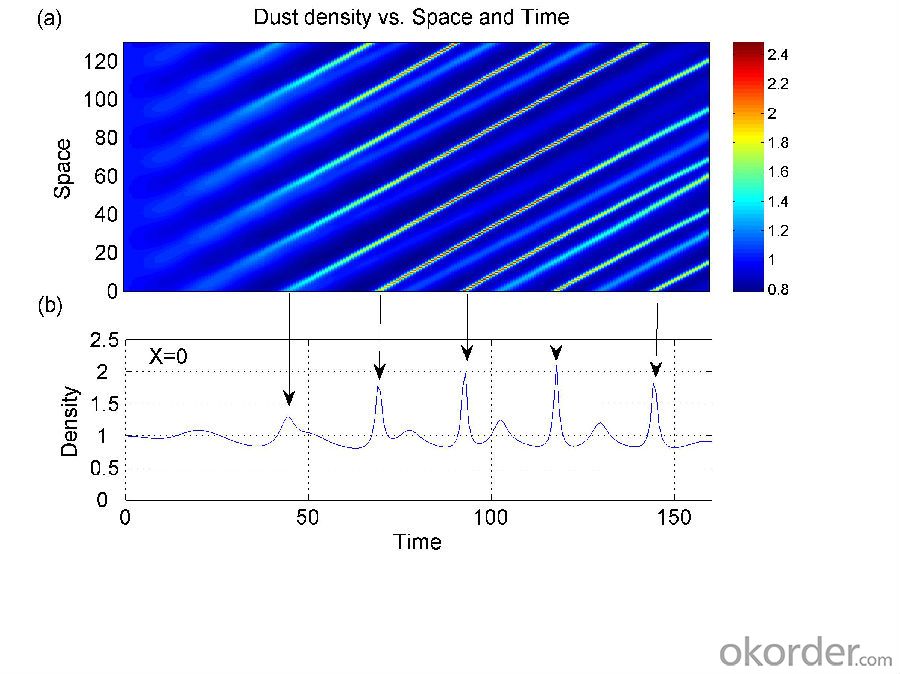
Main Feature of Hot Rolled Square Steel Billet 3SP Standard 100mm
1) Excellent corrosion resistance: The zinc layer provides a good protection of Pre-painted Galvanizeed Steel Sheet.
2) High heat resistance: The reflective surface of the material aids in efficiently reflecting the sunlight away and in turn reducing the amount of heat transmitted. The thermal reflectivity converts into energy savings.
3) Aesthetics: Pre-Painted Galvanized steel sheet is available in plethora of patterns and multiple sizes as per the requirements that given by our customers.
4) Versatility: can be used in the various areas.Standard seaworthy export packing: 3 layers of packing, inside is kraft paper, water plastic film is in the middle and outside GI steel sheet to be covered by steel strips with lock, with inner coil sleeve.
Applications of Hot Rolled Square Steel Billet 3SP Standard 100mm
1) Automotive bodies: filters, fuel tanks, etc.
2) Construction materials: roofings, welding pipes,
3) Electric and electronic appliances: computer cans, etc.
4) Steel cans: containers, etc.
5) Steel furniture: washing machines, refrigerators, microwaves, etc.
6) Drums
7) Office equipment: printer, recorders, etc.
8) Motors and transformers
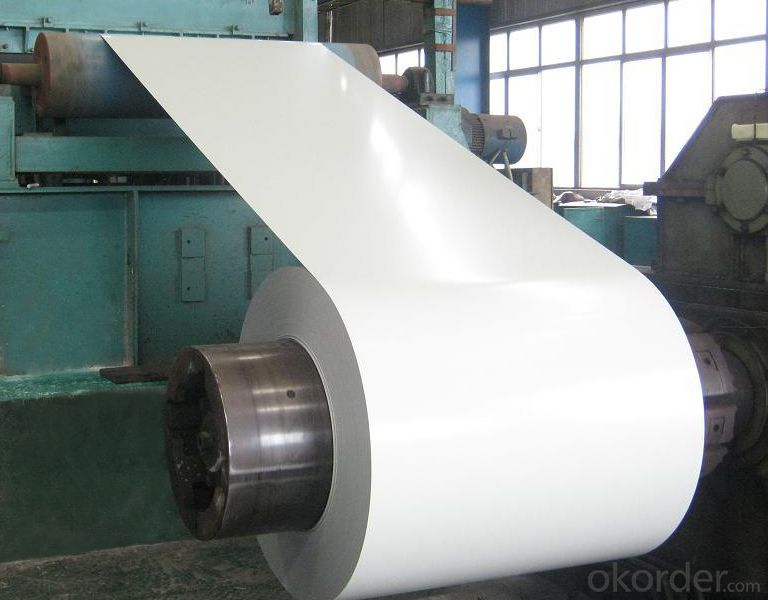
Specifications of Hot Rolled Square Steel Billet 3SP Standard 100mm
| Classified symbol | Yield Point Minimum N/mm2 | Tensile Strength Minimum | Elongation Minimum % | Application | ||||
| N/mm2 | Nominal Thickness mm (t) | |||||||
| JIS | Yogic | 0.25-0.4 | 0.4-0.6 | 0.6-1.0 | 1.0-1.6 | |||
| G3312 | specification | |||||||
| CGCC | CGCC | -205 | -270 | -20 | -21 | -24 | -24 | Commercial |
| CGCD | CGCD | --- | 270 | --- | 27 | 31 | 32 | Drawing |
| --- | CG340 | 245 | 340 | 20 | 20 | 20 | 20 | Structural |
| CGC400 | CG400 | 295 | 400 | 16 | 17 | 18 | 18 | Structural |
| CGC440 | CG440 | 335 | 440 | 14 | 15 | 16 | 18 | Structural |
| CGC490 | CG490 | 365 | 490 | 12 | 13 | 14 | 16 | Structural |
| CGC570 | CG570 | 560 | 570 | --- | --- | --- | --- | Structural |
| ASTM Designation | Yield Point Minimum | Tensile Strength Minimum | Elongation Minimum % | Application | Q/BQB 445-2004(China standard) | ASM A653/A653M | JISG 3312 | |
| ksi(MPa) | ksi(MPa) | TDC51D+Z | (CS TYPE A+Z) | CGCC | ||||
| A653(M)-99 CS TYPE A,B,C | --- | --- | --- | Commercial | TDC52D+Z | CGCD | ||
| A653(M)-99 FS | --- | --- | --- | Lock Forming | TS250GD+Z | (G250+Z) | - | |
| A653(M)-99 DS | --- | --- | --- | Drawing | TS300GS+Z | (G300+Z) | CGC 400 | |
| A653(M)-99 SS Grade33(230) | 33(230) | 45(310) | 20 | Structural | TS350GD+Z | (G350+Z) | CGC490 | |
| A653(M)-99 SS Grade37(255) | 37(255) | 52(360) | 18 | Structural | TS550GD+Z | (G550+Z) | CGC570 | |
| A653(M)-99 SS Grade40(275) | 40(275) | 55(380) | 16 | Structural | ||||
| A653(M)-99 SS Grade50(345) | 50(345) | 65(450) | 12 | Structural | ||||
| A653(M)-99 SS Grade80(550) | 80(550) | 82(570) | --- | Structural | ||||
FAQ of Hot Rolled Square Steel Billet 3SP Standard 100mm
We have organized several common questions for our clients,may help you sincerely:
1. How Can I Visit There?
Our company is located in Tianjin City, China, near Beijing. You can fly to Tianjin Airport Directly. All our clients, from home or aboard, are warmly welcome to visit us!
2. How Can I Get Some Sample?
We are honored to offer you sample.
3. Why choose CNBM?
1, ISO, BV, CE, SGS approved.
2, Competitive price and quality.
3, Efficient service team online for 24 hours.
4, Smooth production ability(50000tons/month) .
5, quick delivery and standard exporting package.
6, Flexible payment with T/T, L/C, Paypal, Kunlun bank, etc .
- Q: How are steel billets used in the production of oil and gas machinery?
- Steel billets play a crucial role in the production of oil and gas machinery. These billets are essentially semi-finished pieces of steel that are further processed to produce various components required in the oil and gas industry. Firstly, steel billets are used to manufacture the key structural components of oil and gas machinery, such as frames, bases, and casings. These components provide the necessary strength, stability, and support to the equipment, ensuring their safe and efficient operation in harsh operating conditions. Moreover, steel billets are also used to produce critical rotating parts, including shafts, gears, and turbines. These components are subjected to high loads, intense pressure, and extreme temperatures, and therefore require exceptional strength and durability. Steel billets, known for their superior mechanical properties, are an ideal material for manufacturing such parts. Furthermore, steel billets are utilized in the production of valves, fittings, and connectors that are integral to the oil and gas machinery. These components are responsible for controlling the flow of oil or gas, regulating pressure, and ensuring a secure connection between various equipment and pipelines. Steel billets are selected for these applications due to their excellent corrosion resistance, which is critical in environments where oil and gas are present. Additionally, steel billets are employed in the fabrication of heat exchangers and pressure vessels used in the oil and gas industry. Heat exchangers play a vital role in cooling or heating fluids, while pressure vessels store and transport hazardous substances safely. Steel billets are preferred for these applications due to their high thermal conductivity, excellent weldability, and resistance to extreme pressures. In summary, steel billets are extensively used in the production of oil and gas machinery due to their exceptional mechanical properties, corrosion resistance, and thermal conductivity. These billets provide the necessary strength, durability, and reliability to the components and equipment required in the oil and gas industry, ensuring safe and efficient operations in this critical sector.
- Q: How are steel billets used in the manufacturing of kitchen appliances?
- Steel billets are used in the manufacturing of kitchen appliances as the primary raw material. These billets are heated and then shaped or molded into various components such as bodies, frames, handles, or cooktops, which form the structural foundation of kitchen appliances. The high strength and durability of steel make it an ideal choice for withstanding the rigors of everyday use in kitchen appliances, ensuring their longevity and quality.
- Q: How do steel billets contribute to the manufacturing of textile machinery?
- Steel billets play a crucial role in the manufacturing of textile machinery as they are used as raw materials for creating various components and parts. These billets are transformed into different shapes and sizes through processes like casting, forging, and machining to form the necessary components of textile machinery such as gears, shafts, frames, and bearings. The high strength and durability of steel billets ensure that the textile machinery is capable of withstanding heavy loads, high speeds, and continuous operation, resulting in efficient and reliable performance in the textile industry.
- Q: What is the price range of steel billets?
- The price range of steel billets can vary depending on various factors such as the quality of the steel, market demand, and global economic conditions. However, on average, steel billets can range in price from $400 to $800 per metric ton.
- Q: What are the different types of welding processes used for joining steel billets?
- There are several types of welding processes used for joining steel billets, including shielded metal arc welding (SMAW), gas metal arc welding (GMAW), flux-cored arc welding (FCAW), submerged arc welding (SAW), and laser beam welding (LBW). Each process has its own advantages and is chosen based on factors such as the thickness of the billets, the desired strength of the joint, and the production requirements.
- Q: How are steel billets used in the production of fasteners?
- Steel billets are used in the production of fasteners as they serve as the raw material for manufacturing various types of fasteners such as bolts, screws, and nuts. These billets are heated and then forged or rolled to shape them into the desired fastener form. The resulting fasteners possess high strength and durability, making them suitable for a wide range of applications in industries like construction, automotive, and manufacturing.
- Q: How are steel billets cut and shaped into desired forms?
- Steel billets, also referred to as long, rectangular bars of raw steel, undergo a process known as steel billet shaping to achieve the desired forms. This process consists of multiple steps that facilitate the transformation of the billets into various shapes and sizes, depending on the intended end product. The initial step in shaping steel billets involves cutting them into more manageable lengths. This is typically accomplished through the use of a sawing process, employing high-speed rotating blades. The choice between circular or bandsaw blades is determined by the specific cutting requirements. Once the billets are cut into smaller lengths, they are then subjected to preheating in a furnace, where they are heated to a specific temperature. This preheating process is crucial as it enhances the malleability of the steel, making it easier to shape. The temperature and duration of preheating vary based on the type of steel and the desired final shape. Following preheating, the billets are transferred to a shaping machine, such as a rolling mill or a forging press. These machines exert significant pressure on the heated billets, deforming them into the desired shape. Rolling mills employ a series of rollers to gradually shape the billets into forms like bars, rods, or sheets. Conversely, forging presses apply immense force to reshape the billets by compressing them between dies or molds. Throughout the shaping process, the billets may undergo additional heat treatments, including quenching or tempering, to enhance their mechanical properties. Quenching rapidly cools the shaped billets, increasing their hardness, while tempering involves reheating and slowly cooling them to improve toughness and durability. Finally, after the steel billets have been shaped into the desired forms, they may undergo further processing steps, such as machining, grinding, or surface finishing, to achieve the required dimensional accuracy and surface quality. These additional processes ensure that the steel products meet specific tolerances and surface requirements. In conclusion, steel billets undergo a combination of cutting, heating, shaping, and additional processing steps to achieve the desired forms. This allows the raw steel material to be transformed into various products, serving the diverse needs of different industries, ranging from bars and rods to sheets and other complex shapes.
- Q: How are the surface defects of steel billets repaired?
- The surface defects of steel billets are repaired through a process called grinding or machining. This involves removing the defective areas by using specialized tools and techniques to smoothen out the surface and make it suitable for further processing or use in various industries.
- Q: What are the different methods of steel billet surface plating?
- There are several different methods of steel billet surface plating, each with its own advantages and applications. Some of the most common methods include: 1. Electroplating: This is a widely used method where an electric current is used to deposit a layer of metal onto the surface of the steel billet. The billet is submerged in a solution containing metal ions, and when the current is applied, the metal ions are attracted to the steel surface, forming a thin coating. 2. Hot-dip galvanizing: In this method, the steel billet is dipped into a bath of molten zinc. The high temperature causes the zinc to bond with the steel, forming a protective layer. This process is commonly used for steel structures that will be exposed to harsh environments or corrosive elements. 3. Powder coating: This technique involves applying a dry powder to the surface of the steel billet, which is then heated to form a protective layer. Powder coating offers excellent durability, resistance to corrosion, and a wide range of color options. 4. Physical vapor deposition (PVD): PVD is a method where a thin film of metal is deposited onto the surface of the steel billet through a physical process such as evaporation or sputtering. This technique is commonly used for decorative purposes and to enhance the hardness and wear resistance of the steel surface. 5. Chemical conversion coating: This process involves treating the steel billet with a chemical solution that forms a protective layer on the surface. Common conversion coatings include phosphate and chromate coatings, which provide corrosion resistance and improve paint adhesion. 6. Thermal spraying: In this method, a heated material, typically a metal or ceramic powder, is sprayed onto the steel billet surface using a high-velocity gas or flame. The sprayed material forms a coating, providing enhanced protection against wear, corrosion, and high temperatures. Each of these methods has its own benefits and is suitable for different applications. The choice of plating method depends on factors such as the desired level of protection, cost, aesthetics, and specific requirements of the steel billet's end use.
- Q: How are steel billets used in the shipbuilding industry?
- Steel billets are used in the shipbuilding industry as a primary raw material for manufacturing various components of a ship's structure, such as hulls, decks, and bulkheads. These billets are melted, cast, and then rolled into the desired shape or size to meet the specific requirements of the ship's design. The high strength and durability of steel make it ideal for withstanding the harsh marine environment and ensuring the structural integrity of the vessel.
Send your message to us
Hot Rolled Square Steel Billet 3SP Standard 100mm
- Loading Port:
- Shanghai
- Payment Terms:
- TT OR LC
- Min Order Qty:
- 2000 m.t.
- Supply Capability:
- 10000 m.t./month
OKorder Service Pledge
OKorder Financial Service
Similar products
Hot products
Hot Searches
Related keywords
